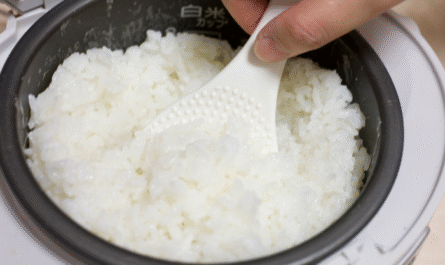In the realm of Ayurveda, the ancient Indian system of medicine, food is considered a crucial component for maintaining balance and well-being. Among the myriad of grains revered in this tradition, black rice holds a special place. Known for its deep purple hue and rich nutritional profile, black rice is often referred to as ‘forbidden rice’ due to its historical association with royalty. This article will delve into the significance of black rice in Ayurveda, exploring its health benefits, culinary uses, and the ancient wisdom that underscores its importance.

What is Black Rice?
Black rice, also known as ’emperor’s rice’ or ‘forbidden rice,’ is a variety of rice that is rich in antioxidants, fiber, and nutrients. Its distinctive dark color is due to the presence of anthocyanins, powerful pigments that also provide health benefits. Unlike polished white rice, black rice retains its bran layer, making it more nutritious and beneficial for health.
The Historical Context of Black Rice in Ayurveda
Historically, black rice was reserved for Chinese emperors due to its scarcity and nutritional value. In Ayurvedic practices, it is cherished for its ability to balance the body’s energies, or doshas, and for its potential to enhance longevity and vitality. Ancient texts often mention the use of black rice in medicinal preparations and dietary practices.
Health Benefits of Black Rice According to Ayurveda
Rich in Antioxidants
The anthocyanins found in black rice are potent antioxidants that protect the body from oxidative stress. According to Ayurveda, reducing oxidative stress is essential for maintaining the body’s internal harmony and preventing chronic diseases.
Supports Digestive Health
High in dietary fiber, black rice aids in digestion and promotes a healthy gut. Ayurvedic practitioners often recommend it for individuals experiencing digestive issues, as it helps cleanse the digestive tract and improve nutrient absorption.
Balances Doshas
In Ayurveda, balance among the three doshas (Vata, Pitta, and Kapha) is vital for health. Black rice is believed to have a balancing effect on these energies, particularly benefiting those with Pitta imbalances due to its cooling properties.
Culinary Uses of Black Rice in Ayurveda
Black rice is versatile in the kitchen, used in both sweet and savory dishes. Its nutty flavor and chewy texture make it a popular choice for puddings, salads, and stir-fries. In Ayurvedic cuisine, it is often cooked with spices like cardamom and cinnamon to enhance its taste and health benefits.
Incorporating Black Rice into Modern Diets
Today, black rice is gaining popularity worldwide for its health benefits and unique flavor. For sushi lovers, incorporating black rice can add a nutritional twist to traditional dishes. To learn more about different types of rice and their uses in sushi, you can visit sushi rice vs arborio rice.
Black Rice and Sushi: A Perfect Match
Sushi enthusiasts are always on the lookout for unique ingredients that enhance flavor and health benefits. Black rice, with its nutty taste and high nutritional value, makes an excellent choice for sushi rolls. For tips on achieving the perfect sushi rice, consider these 5 tips for perfect sushi rice.
Nutritional Comparison: Black Rice vs Other Rice Varieties
Compared to other rice varieties such as white and brown rice, black rice boasts a higher content of antioxidants, fiber, and protein. This makes it a superior choice for those seeking to boost their dietary nutrient intake. For a deeper understanding of the differences between sushi rice and other rice types, check out this comparison of sushi rice vs medium grain.
How to Cook Black Rice
Cooking black rice is simple and requires similar preparation to other rice types. It is important to rinse the rice thoroughly and soak it for a few hours to reduce cooking time. To achieve a perfect texture, cook it in a rice cooker or on the stovetop with a 2:1 water-to-rice ratio.
Black Rice Recipes in Ayurveda
Incorporate black rice into your diet with these Ayurvedic recipes:
Black Rice Porridge
Cook black rice with coconut milk, sweeten it with jaggery or honey, and add spices like cinnamon and cardamom for a nourishing breakfast.
Black Rice Salad
Combine cooked black rice with fresh vegetables, herbs, and a drizzle of lemon juice for a refreshing and healthy salad.
The Future of Black Rice in Global Cuisine
With rising awareness of its health benefits, black rice is becoming a staple in kitchens worldwide. Its integration into global cuisines reflects a growing appreciation for ancient grains and their contribution to modern dietary practices.

FAQs
What makes black rice different from other rice varieties?
Black rice is higher in antioxidants, fiber, and protein compared to white and brown rice, making it more nutritious.
Is black rice suitable for all dosha types in Ayurveda?
Yes, black rice is considered balancing for all doshas, especially beneficial for Pitta due to its cooling properties.
Can black rice be used in sushi?
Absolutely! Black rice can be used in sushi to add a unique flavor and nutritional boost. For sushi lovers, incorporating black rice can transform traditional dishes into healthful delights.
For more in-depth information on the health benefits of black rice, check out this external source: Black Rice Health Benefits.
This article contains affiliate links. We may earn a commission at no extra cost to you.




